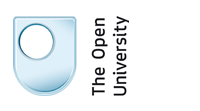

| :: | THE MUSIC COMPUTING LAB |
| : | PROJECTS |
People
Projects
Publications
Non-Print
PhD Places
Virtual MPhil
Visitors/Interns
News & Events
Jobs
Meetings
Resources
Site Map
Contact
Current Projects
Completed Projects
 |  | ||||
People Projects Publications Non-Print PhD Places Virtual MPhil Visitors/Interns News & Events Jobs Meetings Resources Site Map Contact Current Projects Completed Projects |
COMPLETED PROJECTSThe E-sense ProjectThe E-sense Project was funded by an AHRC speculative research grant. In this interdisciplinary research, philosophy and art combined with various flavours of computing: ubiquitous; wearable; and physical.The project involved a range of sensory augmentation devices including the Music Jacket, The Haptic Drum Kit and Song Walker Harmony Space.New User Interfaces for Musical Timbre ProjectThe user interface of most synthesisers tends to be expressed in system (i.e. engineering) terminology, obliging the user to become fluent with the synthesis method employed. This causes problems for many users. The New User Interfaces for Musical Timbre Design Project involves the design, implementation , and evaluation of a prototype of a new kind of user interface for controlling musical timbre that addresses this problem in a principled way.A Computer Supported Approach Towards Collaborative and Creative Musicality in the ClassroomThis project investigated social learning theories and models of the creative process, in order to find ways of encouraging children to think creatively in the classroom, and to explore new ways in which technology might facilitate this. A generative framework for creative learning was developed which draws on creativity theory and which can be applied to the design of classroom-based materials and the design of educational software. In order to demonstrate how the framework can be applied in software design, an educational program called SoundScape was designed.The SoundScape system was tested by 96 school children (aged 11 years) in music composition tasks. The generative framework presents an approach towards advancing educational materials through technology by considering the creative process in any domain. SoundScape.Aspect-Orientated Music RepresentationThis project devised, and now continues to refine and investigate, ways in which Aspect Oriented Programming (AOP) and Multi-Dimensional Separation of Concerns (MDSOC) approaches can be applied to the organization of musical materials for the purposes of music composition and musical analysis.Spatial Audio NavigationThe Music Computing Lab has a strong interest in Audio Computing, particularly Spatial Audio. This project was was the first paper to apply spatial audio to navigation for freely mobile sighted users, using a minimal attention approach. Spatial Audio Navigation.Artificial Intelligence, Melody and EducationSmith’s constraint-based learning tool MOTIVE is designed to support beginners to explore the composition of melody. In order to achieve this aim, Smith developed an engine within MOTIVE which remains the most complete computational model of Narmour’s (1989) cognitive theory of melody. Artificial Intelligence, Melody and Education.Knowledge Mentoring for Supporting Musical Composition LearningA theoretical framework, called the Knowledge Mentoring framework (KMf), was developed to investigate how studies of dialogue and interaction can be exploited in a practical way by designers of computer-based teaching agents. The KMf provides a taxonomy and definitions of the pedagogical goals involved in a 'mentoring' style of teaching. Mentoring is an approach to teaching that aims to support learners' creative, metacognitive and critical thinking, these being essential to musical composition and other open-ended, problem-seeking domains. Knowledge Mentoring for Supporting Musical Composition Learning.PlanC: A Constraint–based Musical PlannerPlanC was an early musical constraint system, but remains uniquely well-suited for manipulating some aspects of tonal harmony. While most musical constraint systems work with descriptions of musical materials such as individual notes and chords; PlanC draws power from a representation called Harmony Space that encodes high level information about tonal harmony in a three dimensional spatial form as shapes, paths, home locations, forbidden areas and trajectories. PlanC: A Constraint-based Musical Planner. |